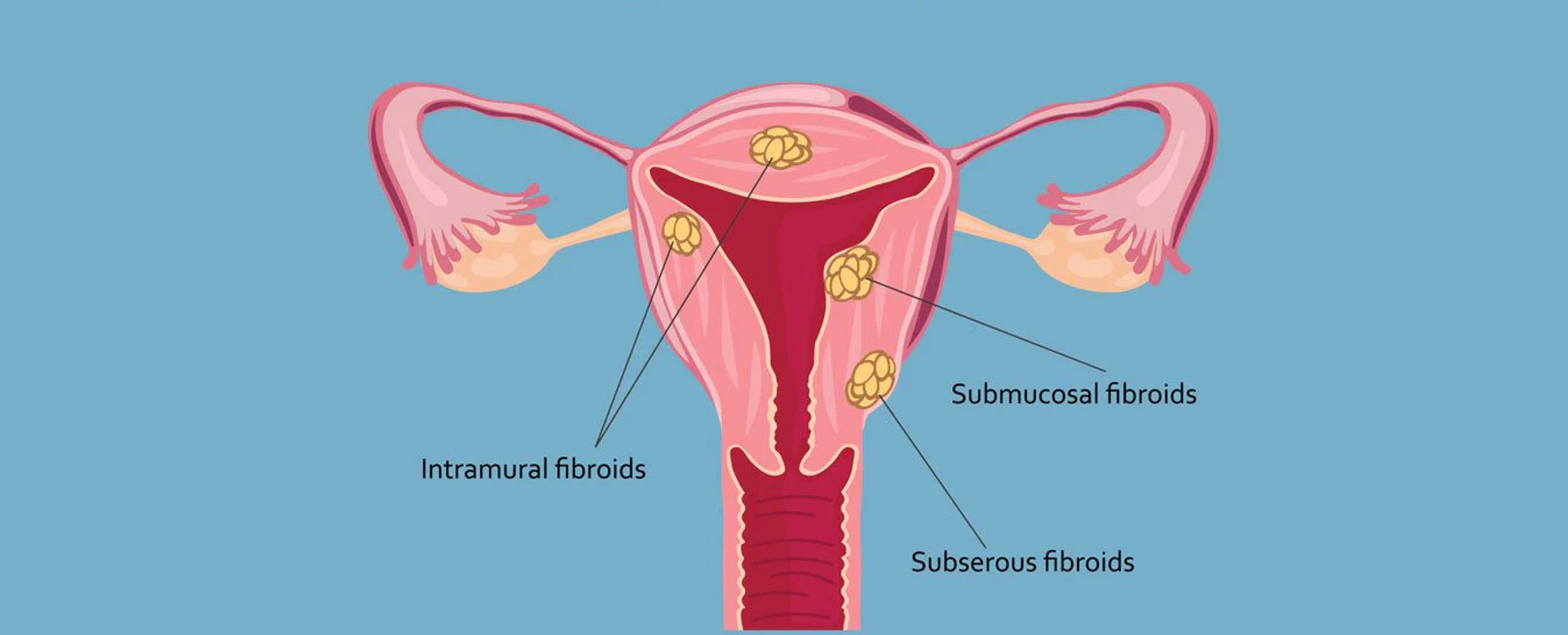
Gynecology
Uterine Fibroid Treatment

Fibroid tumors are noncancerous growths that develop on the muscle wall of the uterus. They can range from small sizes to large masses that fill the entire abdominal cavity. While women of all ages can be affected, those in their 40s and 50s are most commonly impacted. For more information on uterine fibroid treatment, consult with our leading gynecologist for fibroids, Dr. Jolly Gosavi.
Types of Uterine Fibroids
- Intramural Fibroids: These fibroids develop within the uterine wall and may reduce the size of the womb.
- Subserosal Fibroids: Found on the exterior of the uterus (the serosa), these fibroids can make the womb appear larger on one side if they grow too large.
- Pedunculated Fibroids: Subserosal fibroids that develop a thin base, or stalk, to support the tumor.
- Submucosal Fibroids: These fibroids grow in the uterine cavity or myometrium.
Symptoms of Uterine Fibroids
Many women with uterine fibroids experience no noticeable symptoms. However, those who do may encounter:
- Heavy menstrual bleeding
- Difficulty emptying the bladder
- Constipation
- Menstrual cycles lasting longer than a week
- Pelvic discomfort or pressure
- Frequent urination
- Back or leg pain
Diagnostic Tests for Uterine Fibroids
To confirm the presence of uterine fibroids and determine their size and location, your doctor may recommend:
- Ultrasonography: Uses sound waves to create an image of the uterus.
- MRI (Magnetic Resonance Imaging): Provides detailed images using radio waves and magnets.
- CT Scan (Computed Tomography): Utilizes X-ray images to offer a detailed view of the uterus from various angles.
- Hysterosonography: Helps diagnose submucosal fibroids by observing the uterus with enhanced clarity.
- Hysterosalpingography: Uses dye to highlight the uterus and check the Fallopian tubes.
- Hysteroscopy: Involves inserting a small telescope with light into the cervix.
- Laparoscopy: A minimally invasive procedure where a laparoscope is inserted through a small abdominal incision.
Potential for Cancer
Fibroids are generally not life-threatening, but in rare cases, they can become cancerous. Statistics show that fewer than one in every 1,000 women with uterine fibroids will develop cancerous fibroids.
Recovery from Uterine Fibroids
Most women do not require surgical removal of fibroids as they often pose no risks or complications. In many cases, fibroids shrink after menopause or stabilize due to hormonal changes.
Consequences of Untreated Fibroids
While fibroids are typically painless, their growth should be monitored. Untreated fibroids can lead to complications such as anemia, severe menstrual cramps, and excessive bleeding.
Medications for Uterine Fibroids
To manage symptoms and reduce the likelihood of further issues, your doctor may prescribe:
- OTC Medications: Help control symptoms like stomach and lower back discomfort.
- Hormonal Birth Control Pills: Balance hormonal levels and reduce fibroid growth.
- Iron Supplements: Prevent anemia due to heavy bleeding.
- Gonadotropin-Releasing Hormone (GnRH) Agonists: Shrink fibroids before removal.
Surgical Procedures for Uterine Fibroids
Several surgical options are available to treat uterine fibroids:
- Myomectomy – A surgical procedure that removes uterine fibroids without damaging the uterus. It is further subdivided into the following categories:
- Hysteroscopy is inserting a scope into the uterus without making any incisions in order to remove the fibroids.
- Laparoscopy – A scope is inserted through some small incisions on the abdomen.
Laparotomy – An abdominal incision is made and the fibroids are removed in one large cut. - Hysterectomy – The removal of the uterus to treat uterine fibroids permanently.
Embolization of Uterine Fibroids – A catheter is used to limit blood flow and shrink the fibroids. - Radiofrequency ablation is a non-invasive and effective treatment for uterine fibroids and accompanying symptoms.
